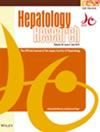The Impact of Inflammatory Markers on Prognosis in Advanced Chronic Liver Disease: Insights From a Prospective Cohort Study
Abstract
Background
Limited research has explored the prognostic significance of the neutrophil-percentage-to-albumin ratio (NPAR), derived neutrophil-to-lymphocyte ratio (dNLR), and systemic immune-inflammation index (SII) in individuals with advanced chronic liver disease (ACLD). This study aimed to examine the association between these inflammatory markers and 90-day transplant-free mortality among patients with ACLD.
Methods
We prospectively recruited hospitalized patients with ACLD from the tertiary teaching hospital. Cox regressions were used to determine the associations between NPAR, dNLR, SII, and mortality.
Results
A total of 412 patients with ACLD were included in this study. The 90-day transplant-free mortality increased with higher levels of NPAR, dNLR, and SII. In multivariate analysis, higher NPAR, dNLR, and SII were independently associated with an increased risk of mortality in patients with ACLD after adjustment for confounders. After the adjustment for covariables, the risk of 90-day transplant-free mortality in ACLD patients increased by 66% and 18% for every unit increase in NPAR (OR: 1.66, 95% CI 1.09–2.53) and dNLR (OR: 1.18, 95% CI 1.01–1.38), respectively (p < 0.05). The patients with NPAR < 3.5 (OR: 3.65, 95% CI 1.30–10.27) and dNLR < 3.5 (OR: 2.40, 95% CI 1.19–4.86) had the highest risk. Subgroup analysis revealed that NPAR, dNLR, and SII demonstrated a strong correlation with 90-day transplant-free mortality in both acute decompensation and acute-on-chronic liver failure populations. Subsequent analysis showed a significant association between NPAR, dNLR, SII, and 90-day transplant-free mortality in patients presenting with ascites, infection, and gastrointestinal hemorrhage.
Conclusions
Increased NPAR, dNLR, and SII were independently correlated with a higher risk of mortality in patients with ACLD.


 求助内容:
求助内容: 应助结果提醒方式:
应助结果提醒方式:


